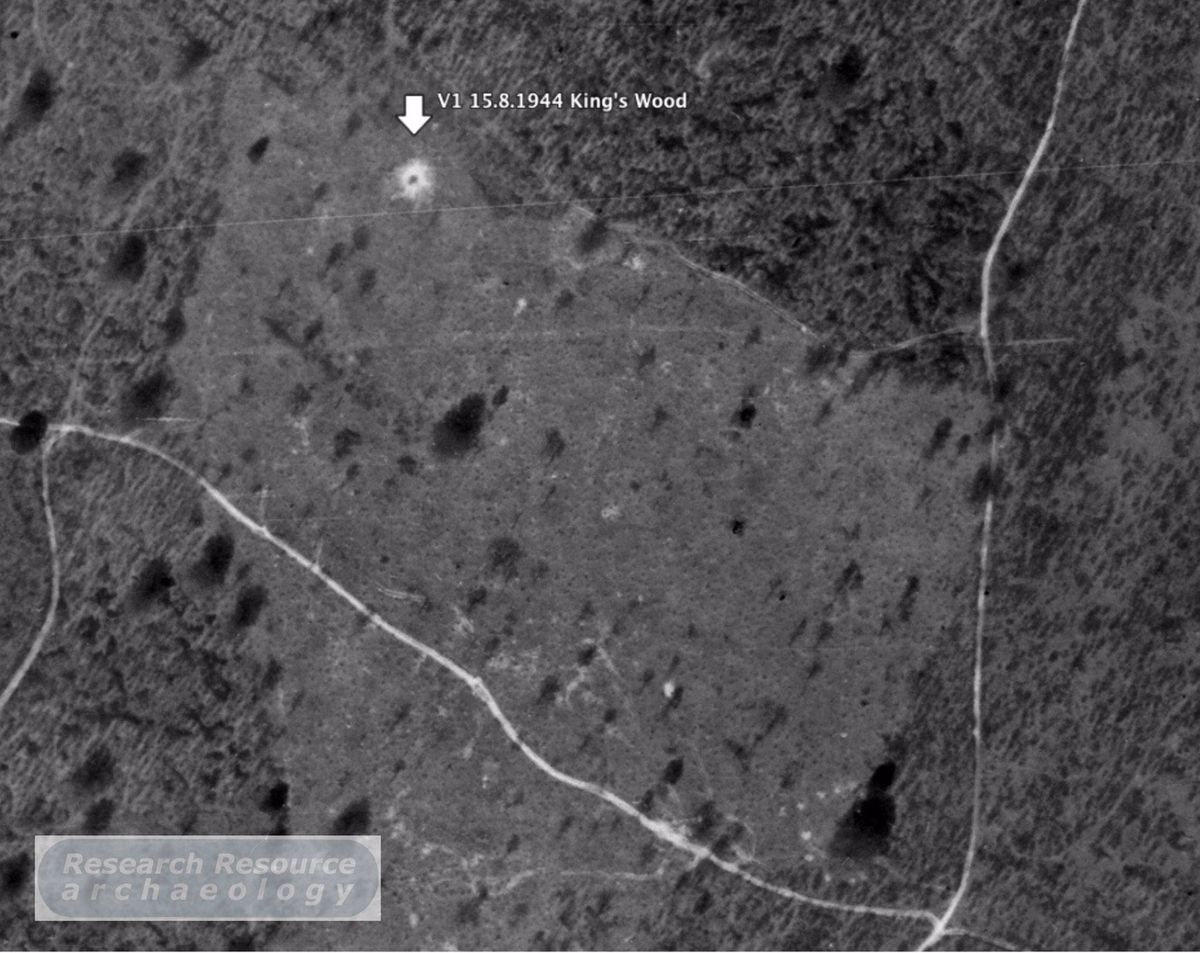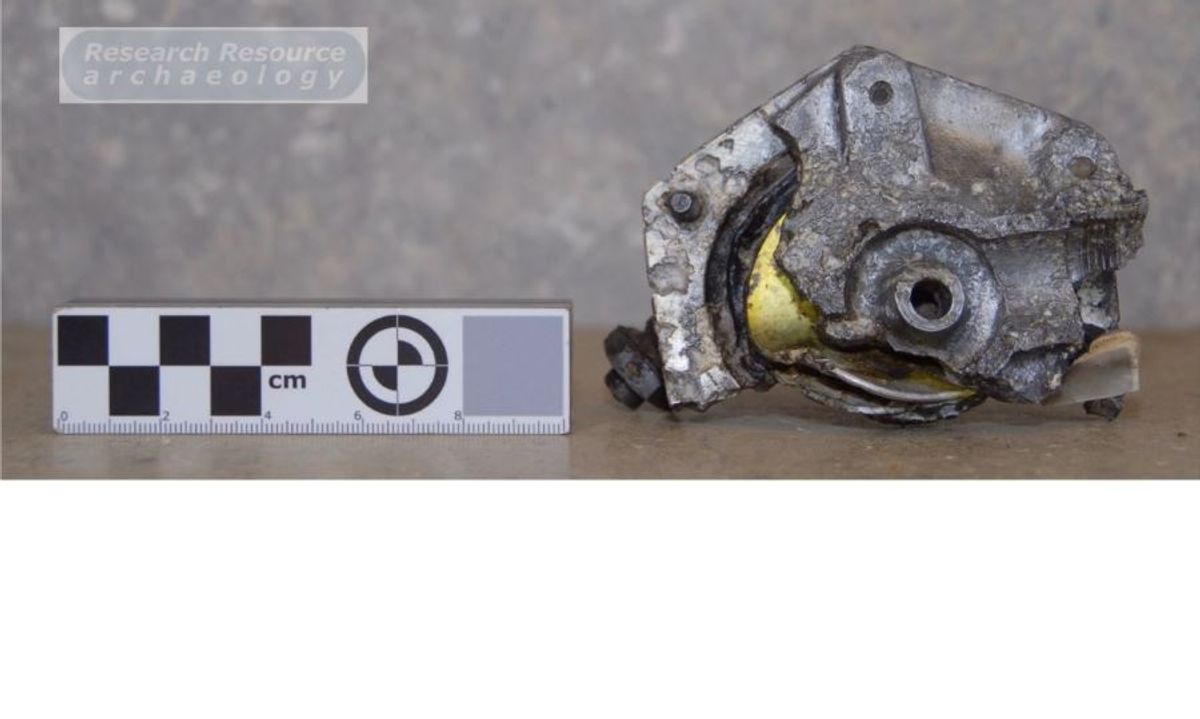The battle against the flying bomb: evidence from four Forestry England owned woodlands
1:00 PM
Research Resource Archaeology have carried out excavation and survey on the impact sites of four V1 flying bombs in King’s Wood, Lord’s Wood, Bayland Wood and Denge Wood, shot down by Polish and British airmen. Colin Welch will give a talk on the results of this interesting research and there will be an exhibition of finds from the investigations.
Between 13th June 1944 and 29th March 1945, 10,500 V-1 ‘Flying-bombs’ were launched against Great Britain using ramps, oriented predominantly towards London which was the main target. 9,500 are recorded as having been brought down either by reaching the target, aircraft, anti-aircraft, balloons or a fault with the device. Cheaply made and very effective as a blast weapon, the innovative pulse-jet motor created a distinctive harsh noise and a flame extending from the rear which, when it stopped at the end of its pre-determined flight time, created a frightening silence before it hit the ground and one tonne of explosive detonated. The launch ramps were situated in northern France meaning that south-east England became the main corridor for the V-1 as they flew towards London, until later in the offensive when it was also air-launched off the coast of Suffolk. The death toll amounted to 6,139 and 17,238 injuries.
The defences in the early part of the offensive consisted of attacking aircraft patrolling the channel and inland up to a gun belt situated in the countryside south of London, followed by a balloon barrage. This was changed in mid-July to provide a formidable anti-aircraft belt running along the coast from Dover into Sussex. Whilst retaining the position of the balloon barrage, this meant aircraft would now attack in the channel beyond the guns and inland over the region until the balloon barrage. The combats were high-speed using the fastest aircraft available and high-risk with little time to manoeuvre if the flying-bomb’s warhead detonated. These anti-diver patrols were tightly controlled by radar. By the end of the flying bomb offensive, advances in radar meant that individual launches could be identified. As the allies progressed across France and into the low countries, the ability to launch them was removed and the final flying-bomb launched against Great Britain to reach land, fell to earth near Sittingbourne in Kent, just six weeks before the end of the war.
The presentation concentrates on the archaeology of four surveys and excavations of impact sites which were the result of aircraft combat successes, in Forestry England owned woodlands.
Location
Classroom, Forestry England yard, King's Wood, Faversham Road, Challock, Kent, TN25 4AR, United Kingdom
Additional location/direction information
TR 0174 5031, ///gravy.easygoing.leave
Parking is available in the Forestry England yard accessed off the A251.
Schedule
Sun, 14 Jul
1:00 PM
|
3:00 PM
Duration of event
2 hours (45 minute talk and time to look at the exhibition)


